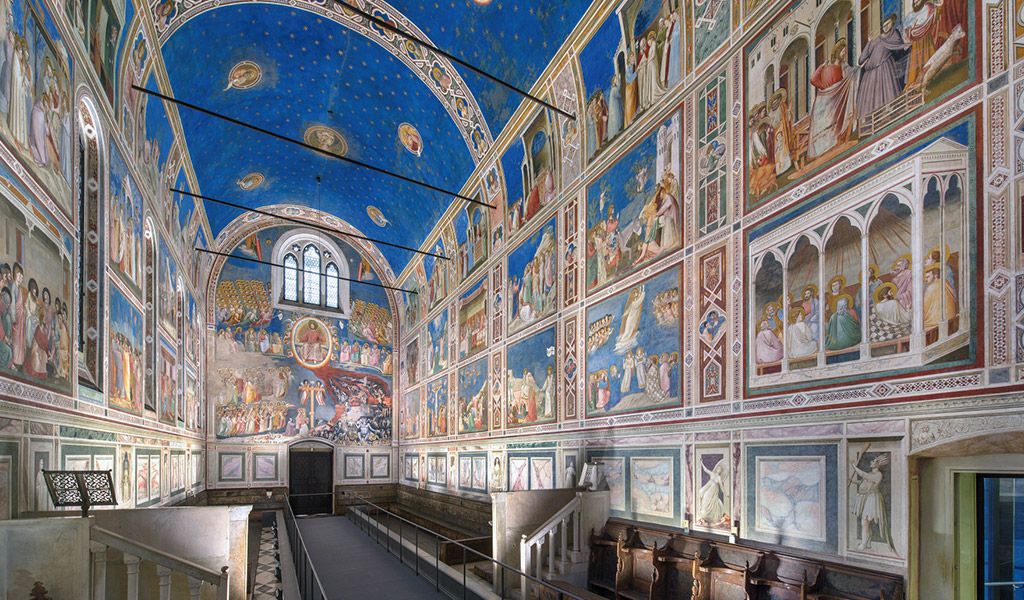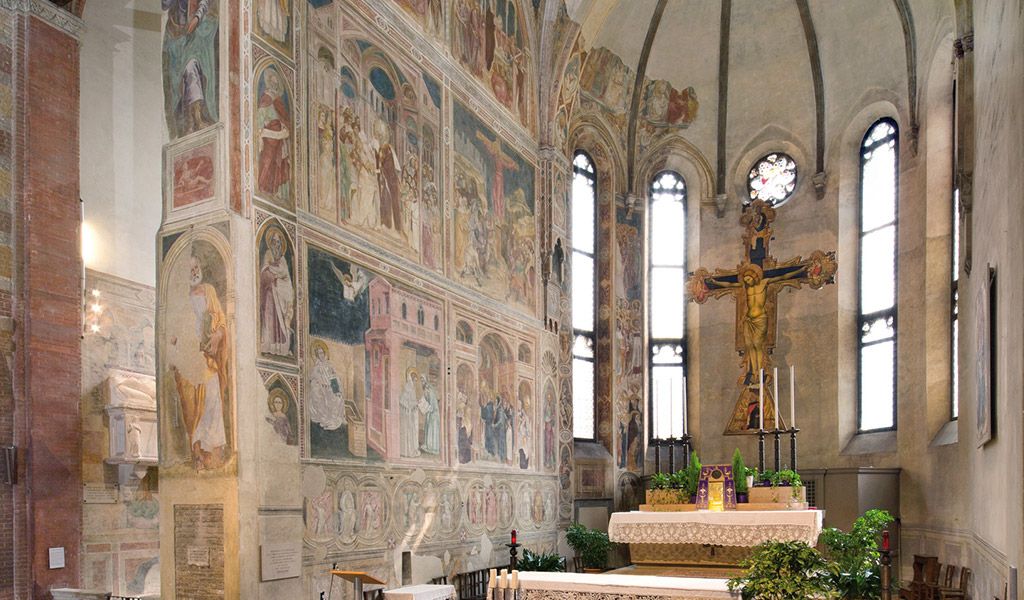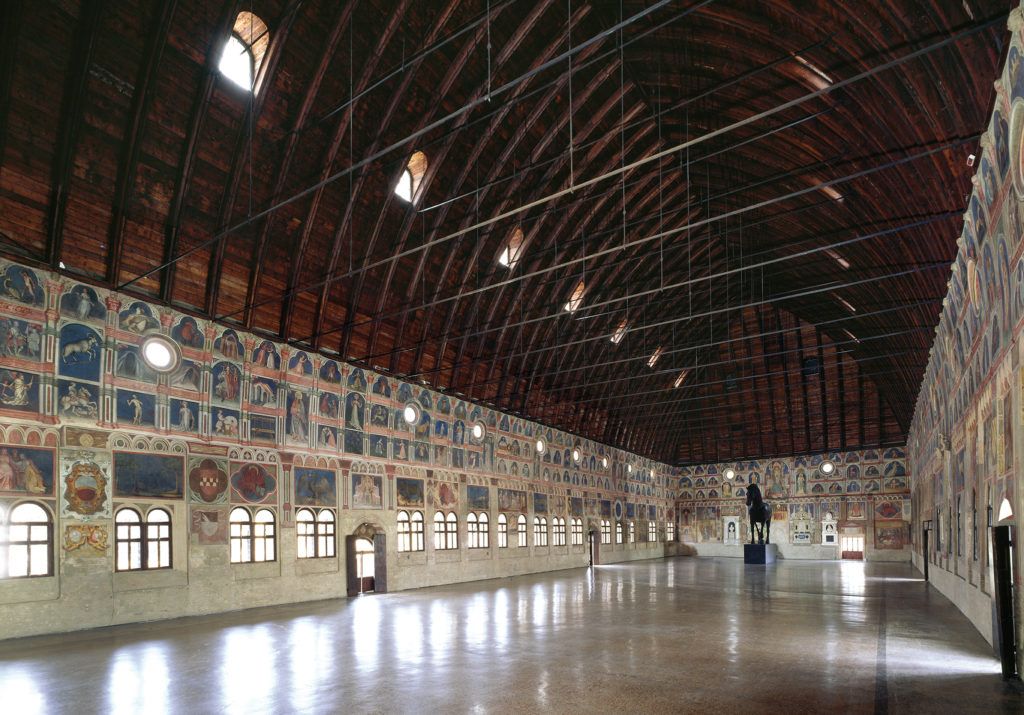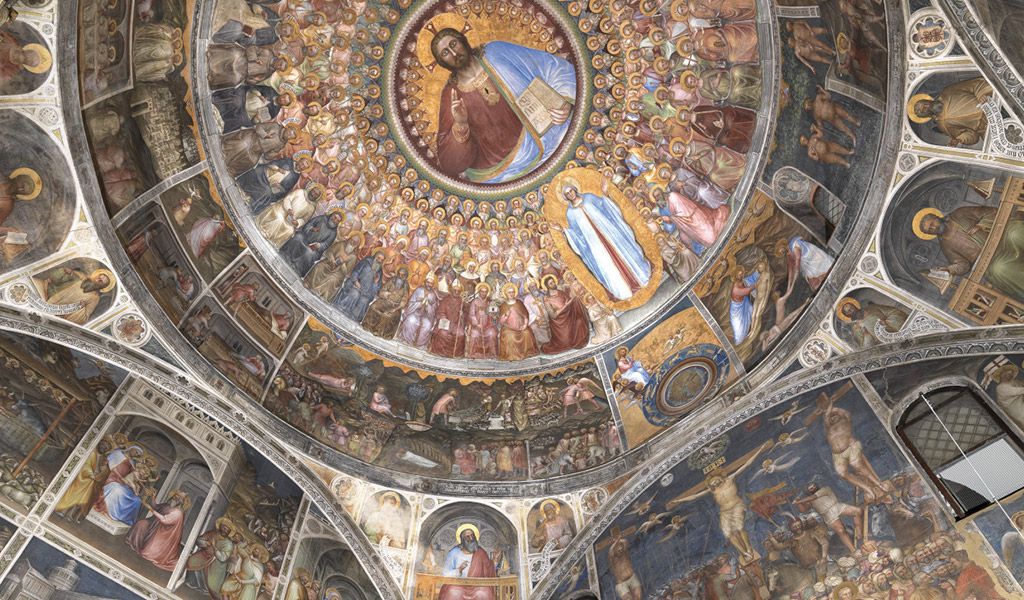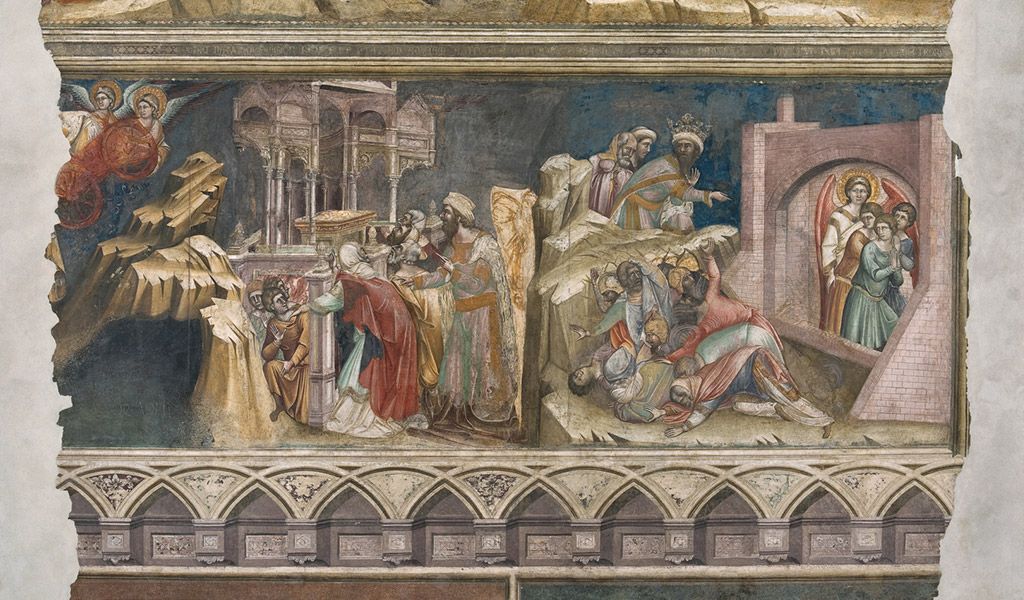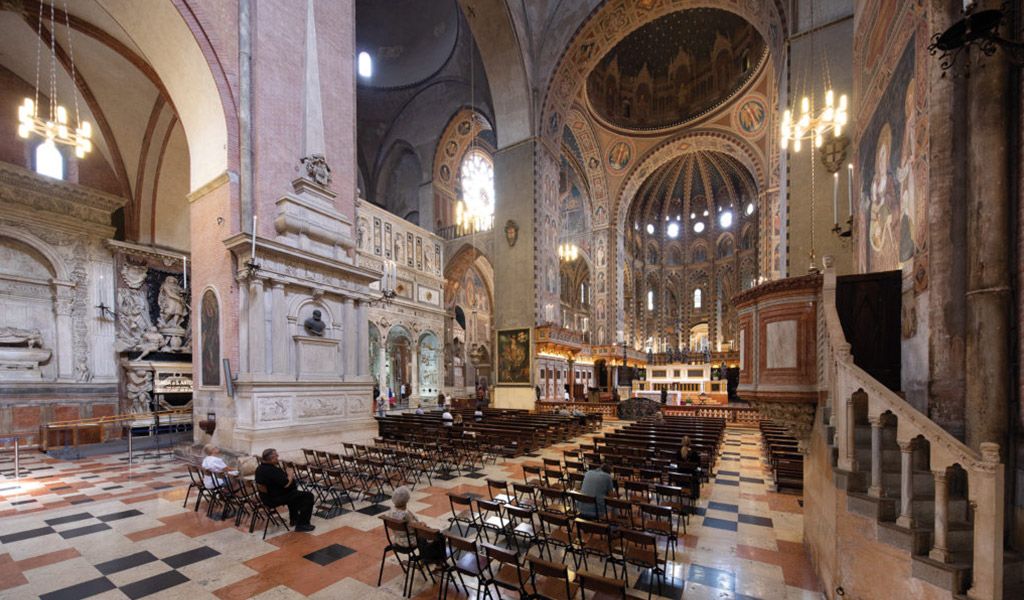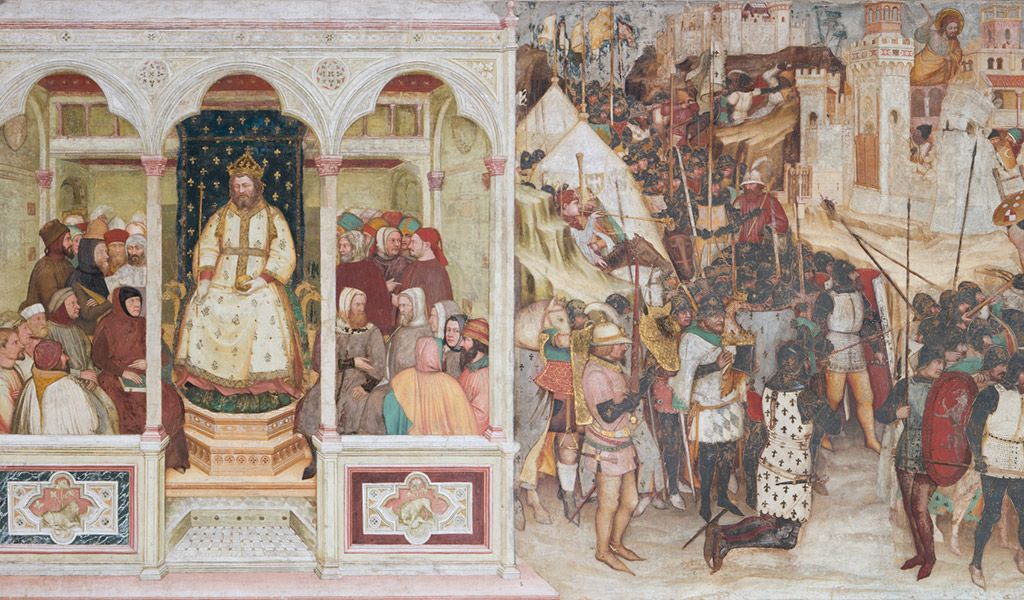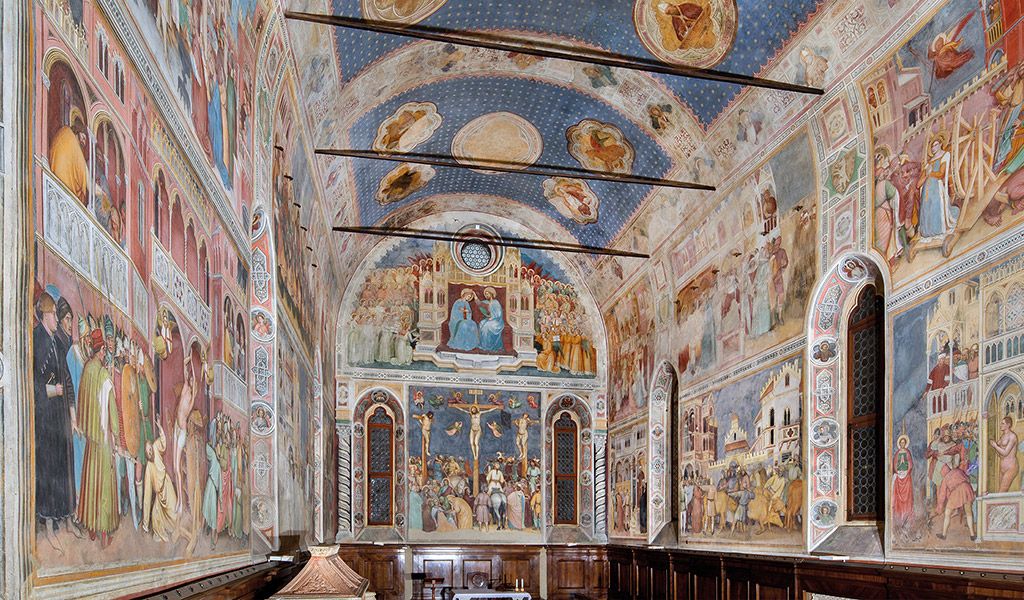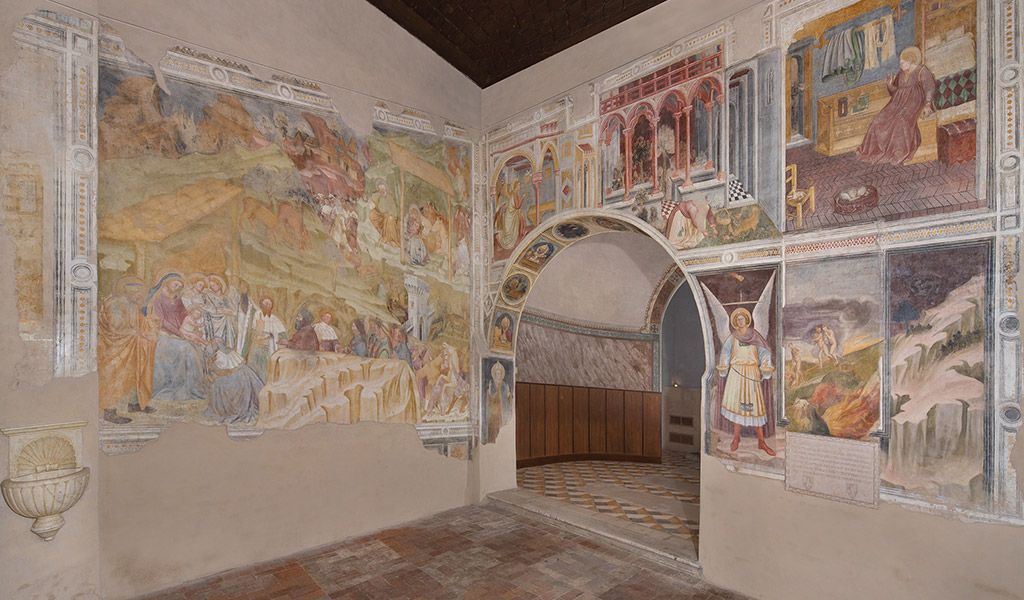Declared a Unesco World Heritage Site, Padua is the world capital of 14th-century painting for the pictorial cycles that we invite you to visit and admire
Where the pictorial cycles are located
They are located in four areas in the centre of Padua
Eremitani Area
Scrovegni Chapel
Giotto’s best-preserved fresco masterpiece in the world and the highest expression of his creative genius.
More info »
Church of Saints Philip and James at the Eremitani
Its pictorial cycles represent the reception of Giotto’s message by Guariento di Arpo and Giusto de’ Menabuoi, in a chronological span extending from the 1430s to the 1470s
Historic Centre, Squares
Palazzo della Ragione
The Palazzo della Ragione represents the largest cycle in terms of painted surface area and the most articulated of the series, with the four large internal walls of the great hanging hall on the first floor completely frescoed.
The decoration consists of over three hundred scenes arranged in two compartments: upper and lower
Cathedral Baptistery
Inside the Baptistery there is a space entirely covered with frescoes centred on the History of Salvation. The cycle represents Giusto de’ Menabuoi’s greatest masterpiece.
Chapel of the Carrarese Palace
The current seat of the Accademia Galileiana di Scienze, Lettere ed Arti (Galilean Academy of Sciences, Letters and Arts), once part of the Reggia Carrarese, still preserves parts of the aniconic decoration found in the ground-floor rooms and the chapel’s valuable fresco cycle.
St. Anthony
Basilica and Convent of St. Anthony
In the Basilica and Convent of St. Anthony there is the earliest evidence of Giotto’s presence in Padua – probably active first in the Chapel of the Madonna Mora, then in the Chapel of Blessings and in the Chapter House – executed in a period around 1302-1303, before the decoration in the Scrovegni Chapel.
The Basilica houses the major protagonists in the history of 14th-century fresco painting in Padua: Giotto, Giusto de’ Menabuoi, Altichiero da Zevio, Jacopo Avanzi and Jacopo da Verona, and thus also preserves the history of their commission in Padua.
San Giorgio Oratory
The Oratory of San Giorgio features a pictorial cycle painted by Altichiero da Zevio, who completely decorated its interior walls with the collaboration of Jacopo da Verona, author of the fresco cycle of the Oratory of San Michele.
The iconographic programme focuses on the Life of Christ and the lives of the patron saints of the Lupi family.
“Specola” area
San Michele Oratory
The fresco cycle for the Oratory of San Michele was commissioned from Jacopo da Verona.
The Oratory of St. Michael features a fresco cycle with the stories of the Life of the Virgin divided into five episodes arranged anti-clockwise.
Within the cycle, the Oratory of St Michael represents the last piece in the history of fresco painting in late 14th-century Padua, where all the innovations introduced by Giotto were brought to fruition.
Padova Urbs Picta Card
In order to visit these marvels, the Padova Urbs picta card has been created, a single ticket that allows entrance to the sites of the serial site “The fresco cycles of the 14th century in Padua” World Heritage Site.
The card is available in three versions:
For tourists the card can be purchased in two types, valid for 48 hours at a cost of 28 euro, or valid for 72 hours at a cost of 35 euro.
For residents of the Province of Padua, a 6-month card is available at a cost of 25 euro.
The Padova Urbs picta card is on sale
– at the ticket office of the Eremitani Museum and at Padova Tourist Info points
– online at www.cappelladegliscrovegni.it and www.turismopadova.it
– by contacting the Call Centre +39 049 2010020.
More information on the card:
Tourist Information and Reception Office – Iat
telephone +39 049 5207415
email: ufficioturismo@comune.padova.it
Credits foto Padova Urbs Picta

